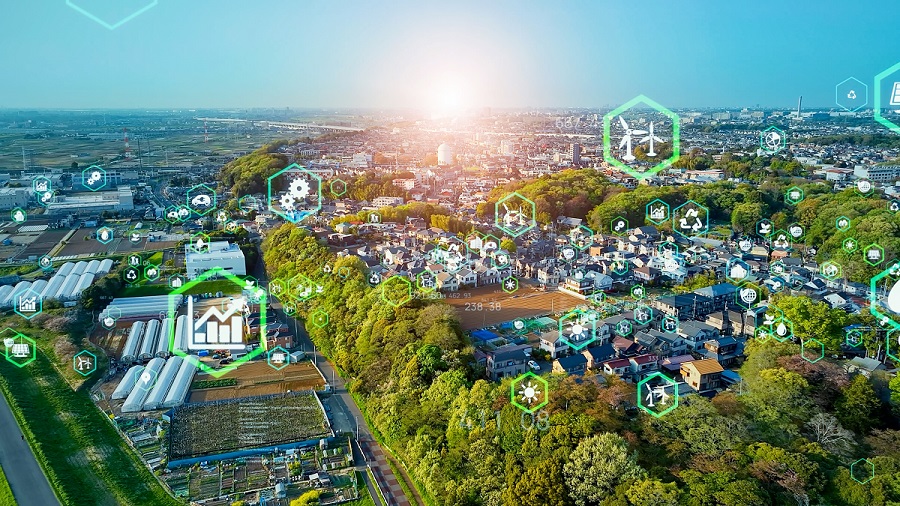Introduction
The DRC and Zambia have taken concrete steps since 2021 to establish a regional battery value chain. This shift is driven by global demand for battery minerals such as cobalt, nickel, manganese, and lithium, as part of decarbonization efforts and increased investment in electric vehicles (EVs) and renewable energy. The mineral resources of these countries, particularly cobalt, are critical to the green industrialization agendas of global powers such as the European Union (EU), the United States, China, and leading fossil fuel economies like the United Arab Emirates (UAE) and Saudi Arabia.
Both countries share the CAC region, a significant copper mining belt, and are working to mobilize investment for a regional battery industry. However, while they are trying to shift from being primarily extractive economies, private mining investment now dominates the sector in both countries. This plays out alongside global geoeconomics, with competition between the USA and China influencing the strategies of DRC and Zambia. Since the early 2000s, China has grown its mining investments in copper and cobalt in the CAC, largely driven by domestic demand. Today, China is the leading global processor of cobalt, which raises concerns for the USA and its allies about securing supplies of critical minerals.
The geopolitical importance of this region has escalated due to the Russia-Ukraine war. In response to China's dominance, the USA joined DRC and Zambia’s efforts to develop a battery industry in December 2022. The EU has also signed critical mineral partnerships with Angola, DRC, and Zambia, and together with the USA, they are planning infrastructure projects like the Lobito Corridor railway to the Atlantic Coast. These developments are further complicated by the growing ties between DRC, Zambia, and China, which have been elevated to “comprehensive partnerships” in 2023.
Mining in the Central African Copperbelt
Copper and cobalt dominate mineral production in the DRC and Zambia. The DRC is known as a "geological scandal" due to its vast mineral wealth, although incomplete data means its reserves are only partially known. Zambia, meanwhile, is home to some of the highest-grade copper and cobalt deposits in the world. In addition to copper and cobalt, both countries have a range of other mineral resources, such as diamonds, gold, uranium, and rare earth minerals.
Historically, industrial mining in the DRC and Zambia was established by colonial powers through companies like Union Minière du Haut Katanga (UMHK) and Anglo-American Corporation (AAC). After gaining independence, both countries nationalized their mining sectors in the 1960s. However, by the late 1990s, financial distress led to the recapitalization of state-owned mining companies through privatization, driven in part by IMF/World Bank policies to liberalize their economies.
The DRC’s Gécamines and Zambia’s Zambia Consolidated Copper Mines (ZCCM) were once dominant state-owned enterprises but have since sold stakes to private investors. Today, both countries rely heavily on foreign direct investment (FDI) in their mining sectors. The privatization of state assets and the increasing role of private mining companies have raised concerns over governance, resource rent distribution, and the environmental and social impacts of mining activities.
Cooperating to Build a Battery Industry
DRC and Zambia, having struggled to ensure that their mineral resources benefit their populations and drive socioeconomic transformation, are working to move from exporting raw minerals to adding value through local industrial activities. The DRC declared cobalt a strategic mineral in 2018, and Zambia launched an aggressive push for expanded mining and exploration in 2021. Both countries see mining as a catalyst for industrialization, energy sector investment, and a vital source of revenue.
The two nations' plans align with the African Union’s (AU) African Mining Vision (AMV), which aims for minerals to underpin broad-based sustainable growth and socioeconomic transformation. Multilateral organizations, including the United Nations Economic Commission for Africa (UNECA) and the African Export and Import Bank (Afrexim Bank), have provided technical assistance to support the battery industry initiatives. DRC and Zambia have signed several international agreements to further these goals, including a 2022 memorandum of understanding (MoU) with the USA and similar agreements with the EU and China.
However, these partnerships come with geopolitical risks, especially given the global trade competition between the USA and China. The DRC and Zambia are exposed to both opportunities and challenges as they try to establish themselves as critical players in the global battery value chain.
Challenges and Governance Issues
The governance of the mining sector in both DRC and Zambia remains problematic. In the DRC, the privatization of Gécamines has raised concerns about the country’s loss of control over its rich mineral resources. The mining code has been revised multiple times to improve transparency and governance, yet many feel that the population is not benefiting adequately from the country’s vast mineral wealth. Zambia faces similar challenges, particularly in relation to the privatization of its mines in the 1990s and the ongoing struggles to balance attracting investment with ensuring that mining benefits the wider economy.
Artisanal and small-scale mining also presents a significant governance challenge in both countries, especially given concerns over child labor and environmental degradation. Efforts to address these issues have included attempts to formalize artisanal mining through cooperatives and to improve governance frameworks at the national and regional levels.
Prospects for Mineral Processing and Refining
One of the key obstacles to realizing a battery industry in DRC and Zambia is the limited capacity for mineral processing and refining. Currently, most of the region’s mineral wealth is exported in raw form, which means that much of the value is captured abroad. Both countries are looking to expand their processing capabilities to capture more of the value from their mineral resources.
Zambia has announced plans to begin electric vehicle battery production in 2024 in partnership with China. However, significant infrastructure investments are needed to support these efforts, as well as technical expertise to ensure that local industries can meet global standards. The success of these initiatives will also depend on how well the two countries can manage the competing interests of foreign investors and local communities.
Recommendations
To successfully develop a battery industry, DRC and Zambia must address several key challenges:
- Strengthening Local Value Chains: DRC and Zambia should focus on increasing local value addition by developing infrastructure and refining capacity. This would allow them to capture more economic benefits from their mineral wealth, rather than exporting raw materials.
- Improving Governance and Transparency: Greater transparency in the mining sector, particularly in contract negotiations and revenue management, is essential. Both countries should continue implementing the Extractive Industries Transparency Initiative (EITI) and similar reforms to ensure that the benefits of mining are distributed more equitably.
- Building Local Capacity: Local technical capacity is crucial for the successful development of a battery industry. Both countries should invest in education and training programs to build the expertise needed to support local manufacturing and innovation in battery technology.
- Diversifying International Partnerships: While foreign investment is necessary, DRC and Zambia should avoid becoming overly dependent on any single foreign partner. By diversifying their international partnerships, they can mitigate geopolitical risks and maintain greater control over their mineral resources.
- Addressing Social and Environmental Concerns: Artisanal mining, environmental pollution, and the use of child labor remain major issues in the mining sectors of both countries. Stronger regulatory frameworks are needed to address these challenges and ensure that mining contributes to sustainable development.
Conclusion
The DRC and Zambia are poised to play a pivotal role in the global green transition through their battery industry ambitions. However, the path forward is fraught with challenges. Both countries will need to strengthen governance, invest in infrastructure, and build local capacity to fully realize the potential of their mineral wealth. By leveraging international partnerships and addressing governance issues, DRC and Zambia can transform their economies and become leaders in the global battery value chain.
To read the full paper, click "Download PDF" above.




